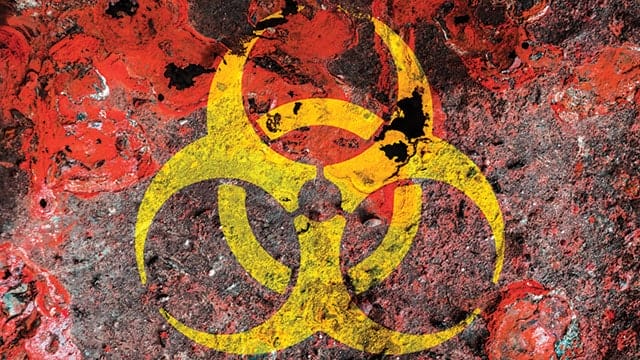
Biohazards are a big health problem worldwide but most of the dangers can actually be avoided! It is important to understand what biohazards are so that you can know how to protect yourself. In this article, we will delve deeper and look into everything you ought to know about biohazards.
What’s a Biohazard?
For starters, a biohazard refers to any harmful biological substance that poses a threat to humans and other living organisms. They can be found anywhere but there are certainly some places and occupations where you are more predisposed to them. You are more likely to encounter biohazards if you work in a hospital, farms or industrial setups that use organic raw materials, indoor places with central air conditioning, etc.
As per the guidelines provided by the Center for Disease Control, there are four levels of biohazards based on the risk level:
- Biohazard Level 1: These types are risky but at a relatively lower level on the scale with a minimum threat level to human beings. Some examples of low-risk biohazards are the likes of Chicken Pox, Escherichia coli, Bacillus subtilis, etc.
- Biohazard Level 2: These ones are riskier than Level 1 with the ability to cause mild to severe diseases. Some examples of bacteria and viruses in this category are HIV, Hepatitis A, B, & C, measles, etc.
- Biohazard Level 3: Pathogens in this level often cause severe disease although most might have treatment or vaccination control. Some examples are Anthrax, Tuberculosis, Rift Valley Fever, Malaria, West Nile Virus, etc.
- Biohazard Level 4: At this level, pathogens are very risky often leading to life-threatening diseases. The diseases caused by pathogens in this category include Ebola, Smallpox, Marburg Virus, etc.
Some of the biohazards examples of human blood in contaminated items, animal waste, human body fluids, pathological waste, human body fluids, etc.
Protecting Yourself from Biohazards
Generally speaking, biohazards tend to gain entry into your body through three routes i.e. contact with contaminated objects, body fluid contact, and inhalation via the respiratory system. In other words, you can protect yourself by minimizing the chances of biohazards entry through these channels. A good example of doing is by using masks, safety goggles, shoe covers, gloves, and other proper protective equipment when handling these types of hazards. It is also important to assess the danger of the hazard you are dealing with and establish if you need biohazard remediation services. Let’s expound more on biohazard control and tell you when to know that a biohazard needs special attention from experts.
Biohazard Control & Remediation
The key to biohazard prevention and control is to first identify the source of contamination. Once this is done, the necessary biohazard control measures can be implemented through solutions like engineering improvements, isolating contamination sources, etc. Please note that simple control measures will only work if the hazard presents low-level health risks but it is advisable to go for biohazard cleanup services if the hazard is high risk.
A biohazard cleanup refers to completely cleaning, sanitizing, and freshening a site where there is a harmful biological hazard. This is a form of remediation done by professional biohazard cleaners with the right training, experience, and equipment. Again, it is vital to hire an expert in cases of high-risk biohazard cleanups for the purposes of health and safety.






